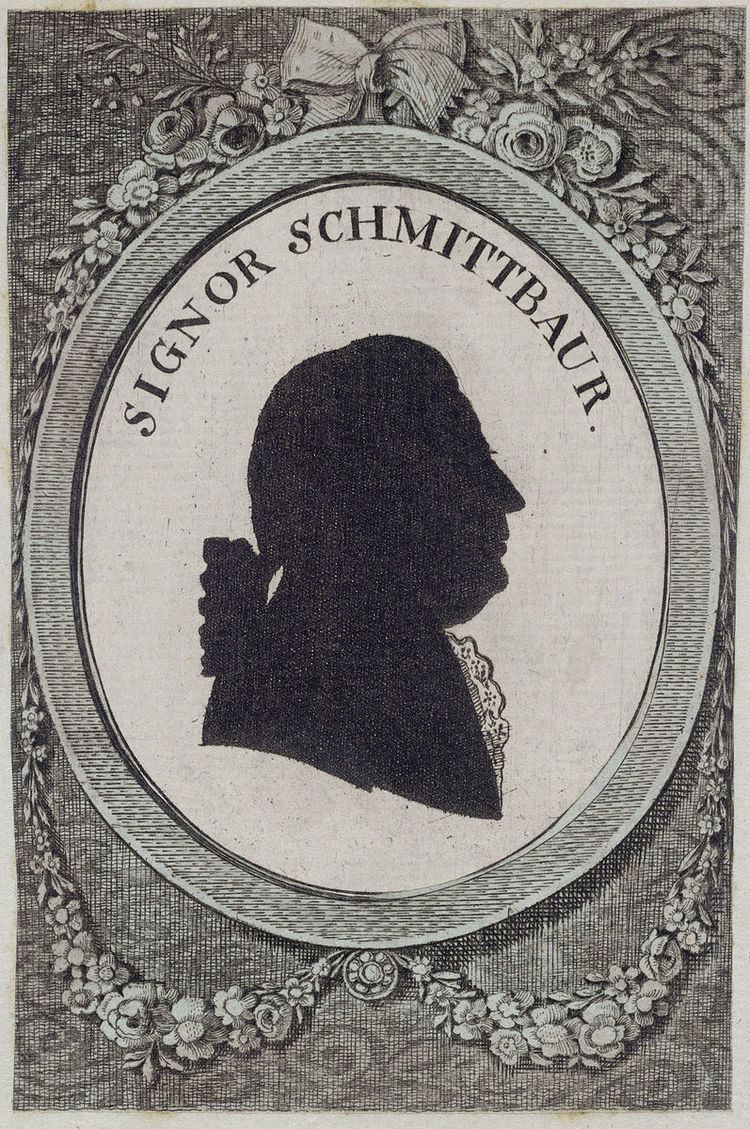Name Joseph Schmittbaur Role Composer | Died 1809 | |
 | ||
People also search for Ernest of Bavaria, Anton Hubert Fischer, Hermann of Wied, Gero, Rainald of Dassel | ||
Joseph Aloys Schmittbaur (1718-1809) - Symphony in D Major (ca. 1795)
Joseph Aloys Schmittbaur (also Schmittbauer; November 8, 1718 - October 24, 1809) was a German composer, Kapellmeister, instrument maker and music teacher.
Contents
- Joseph Aloys Schmittbaur 1718 1809 Symphony in D Major ca 1795
- Joseph Aloys Schmittbaur 1718 1809 Symphony in B flat Major erschienen 1795
- Life
- Style
- Operas
- Cantatas and other vocal works
- Sacred music
- Symphonies
- Concertos
- Chamber music
- Keyboard music
- References
Joseph Aloys Schmittbaur (1718-1809) - Symphony in B flat Major (erschienen 1795)
Life
Joseph Aloys Schmittbaur was born in Bamberg and received his musical education from the organ builder of the Würzburg court Johann Philipp Seuffert. He was also a pupil of Niccolò Jommelli, probably in Bologna. Around 1750 he was employed in the court of Rastatt, where he became concertmaster in 1759 and Kapellmeister in 1766. During this time he set German and Italian works for the stage. After the dissolution of Rastatt chapel in 1771, he became concertmaster of the Badische Staatskapelle in Karlsruhe. In January 1775, Schmittbaur was given the position of Kapellmeister of Cologne Cathedral, where he was deeply influenced by the conservative musical activities of the musical academies. Two years later, upon the death of Giacinto Sciatti in 1777, he returned to Karlsruhe to become Kapellmeister. He retired from his duties as Kapellmeister in 1804, leaving his place at the court to his son, Ludwig Joseph Abbe (1755-1829), a composer of Lieder. Three other children of his were musicians: August (b. 1763) was a clarinetist and flutist, Nepomuk was a violinist active near Karlsruhe, and Therese was a singer and keyboard player.
Christian Friedrich Daniel Schubart commented on Schmittbaur that "He is one of the finest composers of our land, and we only now see what the world long ago had in him."
Schmittbaur was in demand as an organ expert, he also produced replicas of the glass harmonica that Benjamin Franklin had invented in 1762 and improved on them, including one for one of his most famous pupils, the blind Marianne Kirchgessner.
Style
Despite the fact that his works were preclassical in style, he was highly regarded as a composer in the 1780s, especially for his symphonies that follow the model of Mannheim school.
Schmittbaur composed masses, cantatas, symphonies, string quartets, flute quartets, and other chamber music. He also wrote stage works.
His first opera was the serenade L'isola disabitata, which reflects the influence of Niccolò Jommelli, who was active since 1753 in Stuttgart. His theatrical works of the 1770s reflect the influence of Gluck's reform opera.
Among his instrumental compositions, most noted are his chamber works, such as the six quartets for flute and strings, which in the past were erroneously attributed to Joseph Haydn.
